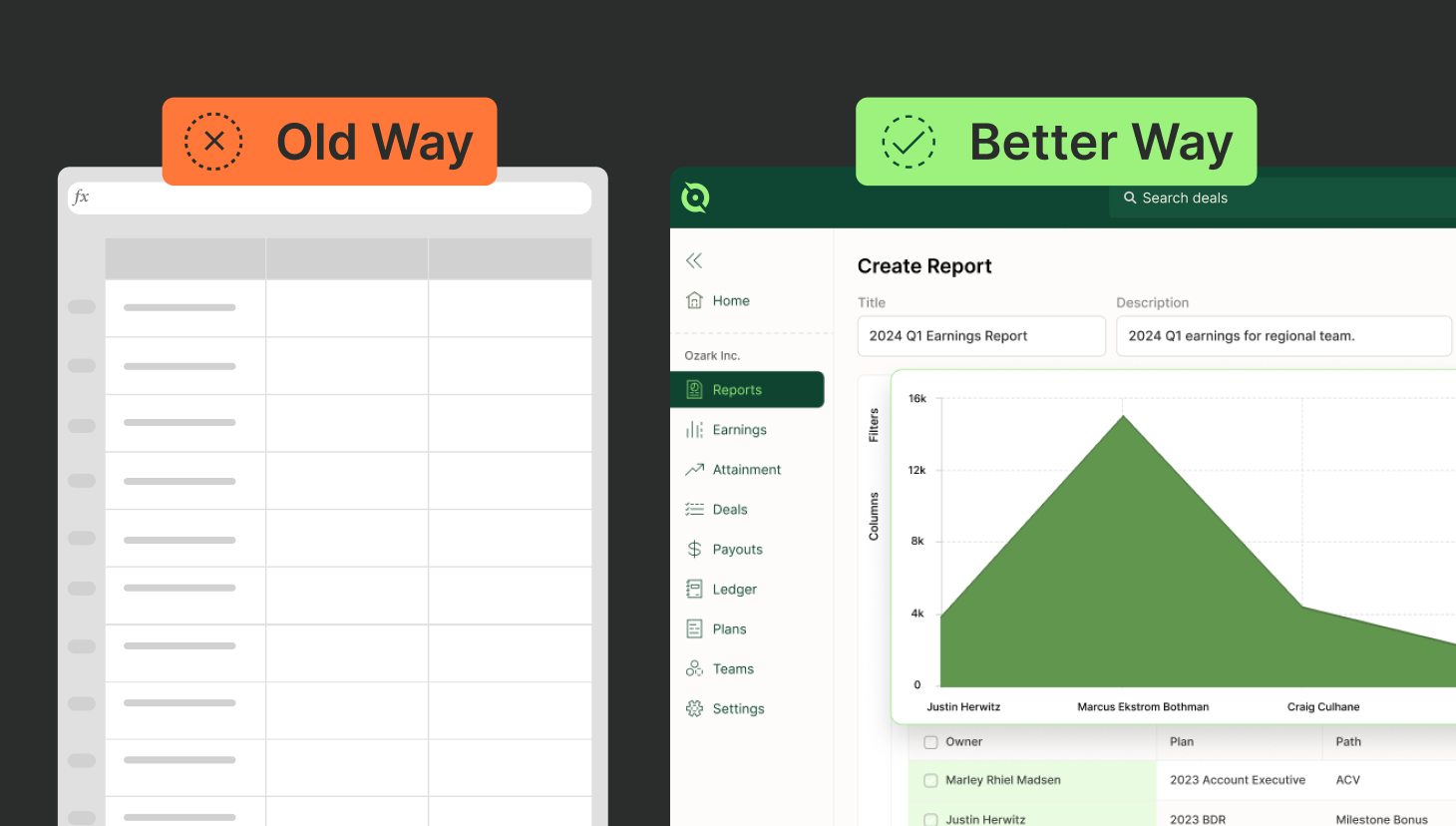In a previous post, I wrote about my experience setting Sales Development Rep (SDR) quotas while I was running an SDR organization. But not all sales quotas are created equal. Unlike Sales Development Rep quotas, SaaS Sales quotas tend to be fairly straightforward… at least in an ideal world, they are. In actuality, there seems to be a combination of detailed financial breakdown and finger-in-the-wind guess and check methodology when building a sales compensation plan.
Instead of going into deep detail about Customer Acquisition Cost (CAC) and Customer Lifetime Value (LTV), there are a few simple rules to think about when setting a quota.
RevOps, sales leaders, and finance teams use our free tool to ensure reps’ on-target earnings and quotas line up with industry standards. Customize plans with accelerators, bonuses, and more, by adjusting 9 variables.
Build a Comp PlanRule 1: Sales reps have to pay for themselves
This one seems very simple, but given that most salespeople in SaaS have a base salary (plus benefits, overhead, etc.) a rep should be responsible for generating revenue equal to some multiple of their On-Target Earnings (OTE). Depending on who you ask, the industry-standard ranges from 3x OTE to 8x OTE for an annualized quota. And of course, OTE depends on the industry, experience level, location, etc. Let’s assume that your reps are mid-level SaaS salespeople making $120k OTE. If we use a fairly standard 5x OTE, that would mean that their annualized quota would be $600k. Now is your quota monthly, quarterly, or annual?
Rule 2: Consider your sales cycle length and your company stage
In deciding whether your reps should be on a monthly, quarterly, or annual quota you first need to think of your company stage. If you’re an older, well-established company, then it’s more likely you can afford to have a longer quota period. There are some organizations that have semi-annual or even annual sales quotas but quarterly seems to be a good option. If you’re a startup, having shorter quota periods will drive a sense of urgency in your reps. Monthly is likely the way to go. Assuming the $600k quota from before, this means $50k monthly or $150k quarterly quotas.
Rule 3: Reps have to be able to achieve their sales quota
No matter how much analysis and planning are put into a quota, if sales reps can’t hit their quota they may feel defeated and give up rather quickly. This isn’t to say that every rep should be able to hit their quota every month, but if the sales quota feels out of reach or no one has ever hit it, that’s a bad quota. A good standard is that 80% of reps should be hitting their quota every month. That way, your top-performers will pick up the slack for the bottom performers and the organization as a whole will hit their quota. Taking the $50k monthly quota from before, if your sales reps average $25k per month in sales, then you’d either need to lower your quota, lower the OTE, or increase your per-rep sales. If your sales reps average $75k per month in sales, then it’s time to either increase quota or pay them more!
Non-revenue sales quotas
Most sales compensation plans are based around revenue quotas, but some have non-revenue components to them. Here are the most common of those ‘non-revenue’ quotas:
- Number of deals/users: Not all sales organizations are built around revenue, some are built around the number of users on an app or the pure number of deals a rep closes.
- Activity: If a sales organization is looking to drive high activity (dials, demos, emails, in-person meetings, etc.) they might impose an activity quota. While these activities don’t guarantee results, they can drive the right behaviors. It’s not recommended to maintain an activity quota permanently, as it will end up with either demotivated reps or reps doing activity for the sake of hitting their quota instead of focusing on revenue.
- Retention: In cases where an organization has a high turnover rate of new customers, some sales reps have a retention quota. This could mean either a certain number of their customers renew their contracts or a certain percentage of their customers renew their contracts.
Need help figuring out what your team’s quota should be?
Book a free consultation with Graham Collins, Head of Growth, or try our free Sales Compensation Calculator.
Over time, setting your sales quotas becomes less guess and check, and more formulaic based on the appropriate On Target Earnings, your company stage, and how achievable the sales quota is. Whether you’re setting sales compensation plans for Sales Development Reps or SaaS sales, remember that simpler is better. And as always, I’m available by email at graham@quotapath.com if you ever wanted to run a sales comp plan by me.



